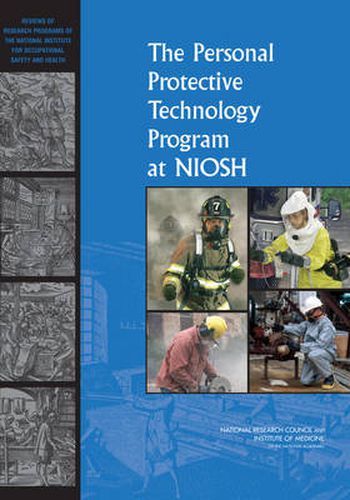Readings Newsletter
Become a Readings Member to make your shopping experience even easier.
Sign in or sign up for free!
You’re not far away from qualifying for FREE standard shipping within Australia
You’ve qualified for FREE standard shipping within Australia
The cart is loading…






Maintaining the health and safety of workers in the United States and globally is accomplished in part by reducing hazardous exposures through the use of personal protective equipment. Personal protective technologies (PPT) include respirators worn by construction workers and miners; protective clothing, respirators, and gloves worn by firefighters and mine rescue workers; and respirators and protective clothing worn by healthcare workers. An estimated 5 million workers are required to wear respirators in 1.3 million U.S. workplaces. For some occupations, such as firefighting, the worker’s protective equipment is the only form of protection against life-threatening hazards; for other workers, the PPT is a supplement to ventilation and other environmental, engineering, or administrative hazard controls. In the United States, federal responsibility for civilian worker PPT is integral to the mission of the National Institute for Occupational Safety and Health (NIOSH).This book examines the NIOSH Personal Protective Technology Program (PPT Program) and specifically focuses on the relevance and impact of this program in reducing hazardous exposures and improving worker health and safety.
$9.00 standard shipping within Australia
FREE standard shipping within Australia for orders over $100.00
Express & International shipping calculated at checkout
Stock availability can be subject to change without notice. We recommend calling the shop or contacting our online team to check availability of low stock items. Please see our Shopping Online page for more details.
Maintaining the health and safety of workers in the United States and globally is accomplished in part by reducing hazardous exposures through the use of personal protective equipment. Personal protective technologies (PPT) include respirators worn by construction workers and miners; protective clothing, respirators, and gloves worn by firefighters and mine rescue workers; and respirators and protective clothing worn by healthcare workers. An estimated 5 million workers are required to wear respirators in 1.3 million U.S. workplaces. For some occupations, such as firefighting, the worker’s protective equipment is the only form of protection against life-threatening hazards; for other workers, the PPT is a supplement to ventilation and other environmental, engineering, or administrative hazard controls. In the United States, federal responsibility for civilian worker PPT is integral to the mission of the National Institute for Occupational Safety and Health (NIOSH).This book examines the NIOSH Personal Protective Technology Program (PPT Program) and specifically focuses on the relevance and impact of this program in reducing hazardous exposures and improving worker health and safety.